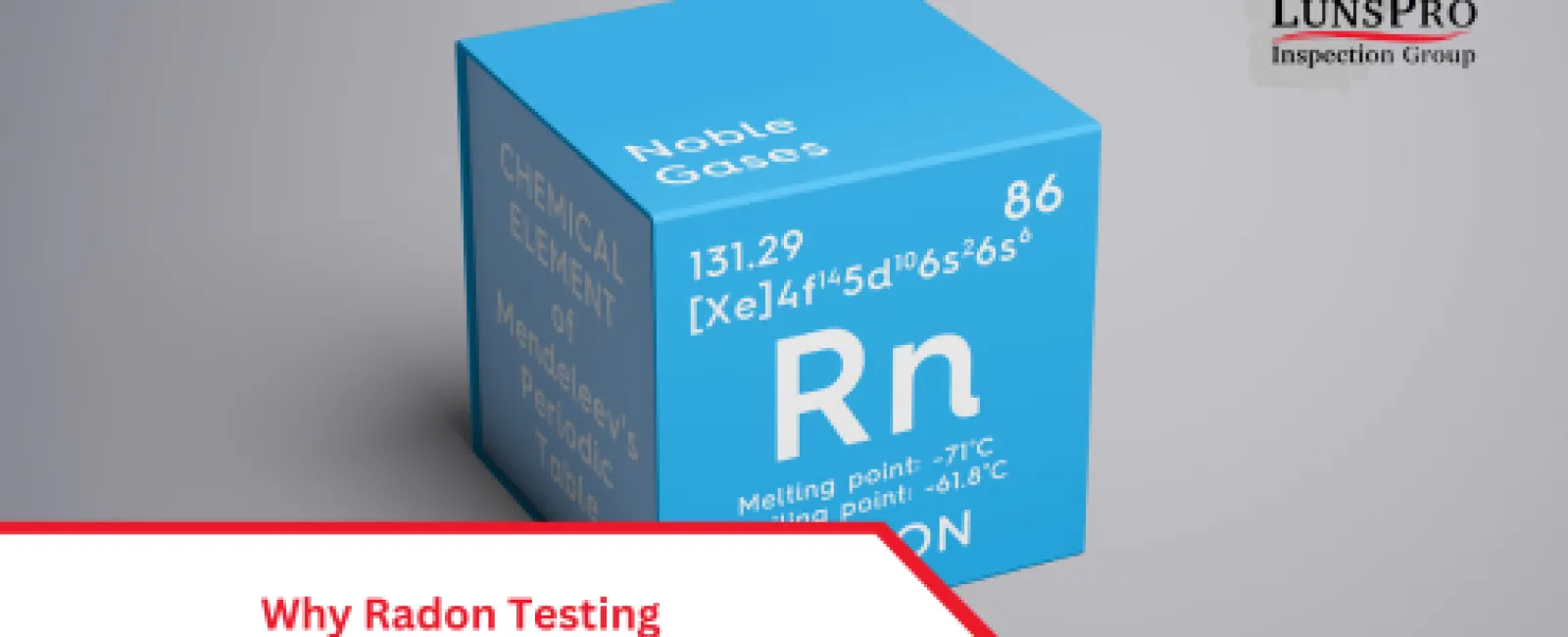Radon is one of the most dangerous yet misunderstood environmental hazards affecting homes today. Odorless, colorless, and tasteless, this naturally occurring radioactive gas is a silent invader that can accumulate inside residential and commercial properties, increasing the risk of serious health problems—especially lung cancer. While many people associate radon testing with home sales, the reality is that radon exposure can affect anyone, at any time, and in any type of structure.
In the Carolinas—particularly across areas like Charlotte, Greensboro, and Raleigh—year-round radon testing should be a critical part of your home maintenance plan. At LunsPro Inspection Group, we've seen firsthand how soil composition, seasonal climate changes, and even home renovations can cause radon levels to spike unpredictably. This article explores why continuous radon awareness and regular testing are essential for safeguarding your family and property throughout the Triad and Triangle Areas.
What Is Radon and Where Does It Come From?
Radon is formed during the natural breakdown of uranium in soil, rock, and groundwater. As this gas is released, it can seep through the ground and enter buildings through cracks and openings in the foundation. Because it's invisible and odorless, radon can build up indoors without homeowners ever realizing it.
Radon levels are measured in picocuries per liter (pCi/L). According to the U.S. Environmental Protection Agency (EPA), levels of 4.0 pCi/L or higher pose significant health risks, although even readings between 2.0 and 3.9 pCi/L can be harmful with long-term exposure.
Why the Carolinas Are at Risk for Elevated Radon Levels
North Carolina has been designated as a moderate to high-risk state for radon exposure by the EPA. Specific counties in the Piedmont and Mountain regions have consistently recorded radon concentrations above the national average. Areas surrounding Charlotte, Greensboro, and Raleigh often have homes built on soil and rock formations that naturally emit radon, such as granite, shale, and metamorphic rock beds.
Radon risk isn't limited to older homes or rural locations. New construction, urban developments, and even well-sealed energy-efficient homes are all susceptible. Factors such as foundation type, ventilation systems, soil moisture, and seasonal humidity all contribute to fluctuating radon levels throughout the year.
Why Radon Testing Needs to Be Done Year-Round
A common misconception is that radon testing is only necessary during a real estate transaction. In truth, radon levels can vary significantly throughout the year, making ongoing testing an important safety measure.
1. Seasonal Changes
-
In winter, homes are tightly sealed to conserve heat, reducing airflow and increasing indoor radon buildup.
-
In spring and summer, shifting soil conditions and rising humidity—especially in the Triad and Triangle Areas—can push radon closer to the surface and into homes.
2. Renovations and Repairs
-
Adding a new room, finishing a basement, or modifying the HVAC system can unintentionally create new entry points or change indoor air pressure, affecting radon levels.
3. Foundation Settling
-
Over time, homes naturally shift and settle, creating new cracks or openings in the foundation—perfect pathways for radon to enter.
Because of these variables, LunsPro Inspection Group recommends annual radon testing as part of routine property care—not just during home buying or selling.
The Health Risks of Radon Exposure
Radon is the second leading cause of lung cancer in the U.S., according to the EPA and the Surgeon General. It is particularly dangerous because symptoms often don't appear until the damage has already been done.
Those at highest risk include:
-
Current or former smokers
-
Children with developing lungs
-
Seniors or individuals with respiratory conditions
Even low levels of radon over extended periods can significantly increase the risk of developing lung cancer, making early detection critical.
How Radon Enters Homes in North Carolina
Radon typically infiltrates a building from the ground up, entering through:
-
Cracks in foundations or walls
-
Gaps in floors or around service pipes
-
Sump pump basins and crawl spaces
-
Construction joints or unfinished basements
Well-insulated or energy-efficient homes may be more susceptible due to reduced natural ventilation, which allows radon to accumulate to unsafe levels.
Testing for Radon in Carolina Homes
There are two main types of radon testing:
1. Short-Term Testing
-
Typically runs for 2-7 days
-
Ideal for quick checks or real estate transactions
-
Provides a snapshot, but may not reflect long-term exposure
2. Long-Term Testing
-
Conducted over 90 days to a year
-
Offers a more reliable average, accounting for seasonal changes
-
Recommended for homeowners who want to understand their ongoing exposure risk
At LunsPro Inspection Group, we use EPA-approved testing devices and adhere to strict protocols during all Carolina home inspections. Our experts can recommend the best testing method based on your home's location, size, and condition.
What Happens If Your Radon Levels Are High?
If your home tests above the EPA's action level (4.0 pCi/L), a radon mitigation system is strongly advised. These systems typically include:
-
A vent pipe and fan system that pulls radon from beneath the foundation and vents it safely outdoors
-
Sealing cracks in floors and walls
-
Improving ventilation in crawl spaces or basements
Mitigation must be customized to your home's structure, which is why professional installation is key. LunsPro's inspectors can help you understand your test results and refer you to licensed mitigation professionals if needed.
Radon and Foundation Integrity: A Critical Link
One often-overlooked benefit of radon testing is its ability to highlight underlying foundation issues. Many radon entry points—such as cracks, gaps, or settling floors—are signs of broader structural vulnerabilities.
By integrating radon testing into your regular Charlotte, Greensboro, and Raleigh Residential and Commercial Inspections, you gain valuable insights into both environmental health and structural soundness. It's a proactive way to address hidden problems before they become costly repairs.
Why Work with LunsPro Inspection Group
At LunsPro Inspection Group, we bring regional expertise, certified inspectors, and advanced equipment to every job. Our goal is not just to detect problems, but to educate and empower homeowners across the Carolinas to make informed decisions.
We proudly serve the Triad and Triangle Areas, including Charlotte, Greensboro, and Raleigh. Whether you're a buyer, seller, or long-term homeowner, our team provides detailed inspection reports, transparent guidance, and dependable follow-up.
Radon exposure is a real and persistent threat—but it's also one that's entirely manageable with the right knowledge and routine testing. In a state like North Carolina, where geology and weather patterns can cause fluctuations in radon levels, year-round vigilance is essential.
Whether you live in a historic home in Raleigh, a newly built property in Charlotte, or a commercial space in Greensboro, radon doesn't discriminate. Don't wait for a real estate deal to prompt action. Make radon testing part of your annual home care checklist.
With LunsPro Inspection Group, you're not just getting an inspection—you're gaining a partner in protecting your home and your health. Schedule your next Carolina home inspection today and take the first step toward safer living, every season of the year.

